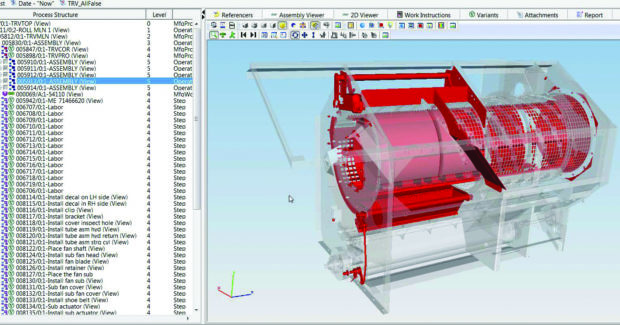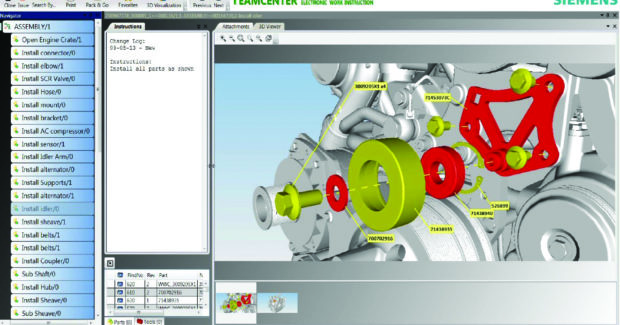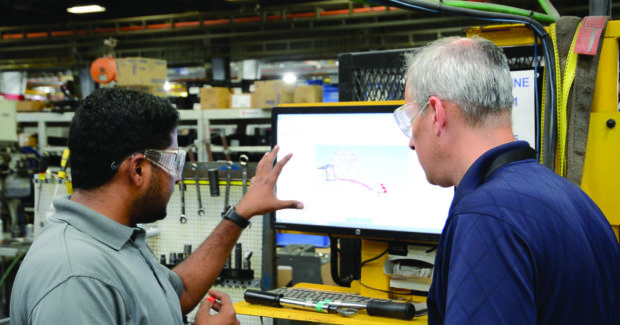How A Global Metal Fabricator Standardized Design and Manufacturing Processes
U.S.-based AGCO makes five brands of agricultural equipment at 40 plants on six continents. To bring order to the potential chaos of model-year changes and new product introductions, the company deployed software for a design anywhere, build anywhere strategy.
Posted: January 25, 2021
BY STEPHANIE JOHNSTON
Five award-winning brands comprising tractors, combines, sprayers, spreaders, balers, loaders, seeders, tillers, and diesel engines sold through 3,000 dealers in 140 countries. Since 1990, a buying spree has made AGCO Corp. of Duluth, Ga., the world’s largest manufacturer of agricultural equipment, surpassing that other world-renowned U.S. farm equipment manufacturer, Deere & Co.
More than 20,000 employees work in 40 manufacturing sites, some of which build the same product, on six continents. Employees speak many languages. Design and manufacturing engineers at one site need to communicate with their cohort elsewhere without inadvertently introducing errors.
How do you standardize and attach bills of material for design and manufacturing to original- and model-year design changes that employees at any site can understand and execute in a way that optimizes your manufacturing resource planning (MRP) system?
If you’re a heavy equipment manufacturer facing the same supply chain and production challenges McDonald’s has conquered, you create a digital twin of both processes.
Standardizing Common Design and Manufacturing Elements
AGCO wanted one global platform where a single manufacturing bill of materials (MBOM) could be reused as the master data for multiple work processes, each with electronic work instructions (EWI). Part design and numbers would be standardized to support standardized manufacturing processes regardless of location.
The company deployed Siemens Digital Industries Software’s Teamcenter software for product lifecycle management (PLM) and Tecnomatix software for digital manufacturing at its Hesston, Kan., plant. Several factors influenced AGCO’s selection:
- the need for manufacturing work instructions and the use of standalone, paper-based work instructions
- the need to better manage design engineering process changes
- issues with the use of the engineering bill of materials (EBOM) in the company’s manufacturing resource planning (MRP) system and manufacturing execution system (MES), and
- to better serve the needs of manufacturing engineering in developing the manufacturing bill of materials (MBOM) and process plans.
Working from the EBOM, manufacturing engineers use Teamcenter and Tecnomatix to create a separate MBOM, reorganizing components and configuring subassemblies that can be sourced externally or, for key components like cabins or engines, from AGCO’s internal supply chain. When developing MBOMs and process plans, they view a multilevel product structure with live links to the 3D CAD model displayed on the same screen. Building a BOM or process plan is done by copying and pasting, and engineers can visually validate the accuracy of the steps in a process.
“Using a system that understands where each of the parts came from in the EBOM, where they’re going to go in the MBOM, where they’re going to be produced globally, and weaving that thread all the way through the structures is key,” says Gary D’Souza, manufacturing engineering lead, global manufacturing PLM.
“With Teamcenter, we’re able to have one site doing 80% of the work necessary for all sites that are building the same product,” says Susanne Lauda, global project lead, manufacturing automation.
Standardizing Work Instructions For Global Manufacturing
An initial initiative was to replace paper work instructions with electronic work instructions (EWIs) to achieve more traceability for model-year changes, provide a better understanding of the product structure, and better manage different structures at different manufacturing sites.
“We begin by getting the engineering data into Teamcenter using tools that Siemens provides, then hand it over to a manufacturing engineer,” says Anvesh Kulkarni, a manufacturing engineer at AGCO’s Hesston plant. “We audit the EBOM and start creating the MBOM, and then go to the bill of process – the replication of what we do on the shop floor – and then start creating the work instructions for the bill of process.”
Manufacturing engineers create work instructions in Teamcenter that include a list of steps in each operation, along with a text version of the instructions, the BOM for the task that includes a change log, and multiple visual depictions of the process and components taken directly from CAD models of the product.
“This detailed step-by-step process of how to assemble a machine gives the operator better visibility of the process,” says Kulkarni. “New operators can pick up very easily compared to what it was like when we had paper bundle work instructions. Digital instructions have created better training material not just for the shop floor, but are also used in new product introductions to analyze and establish a more-efficient manufacturing process.”



















